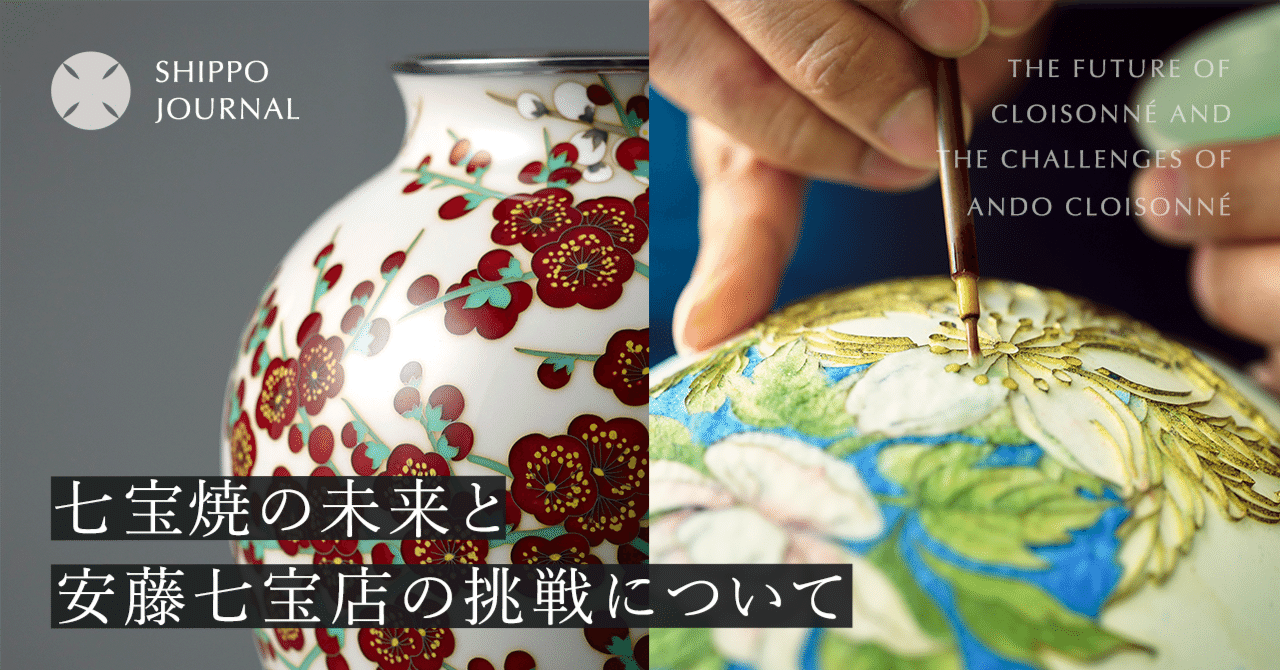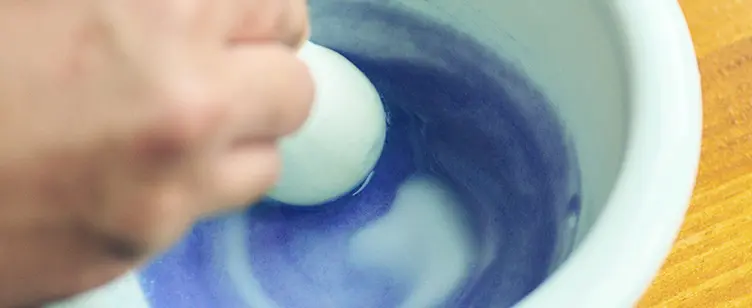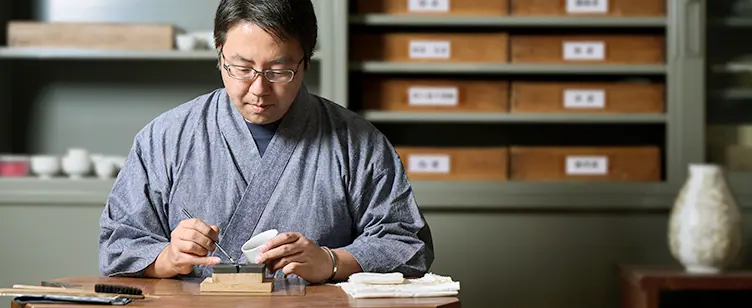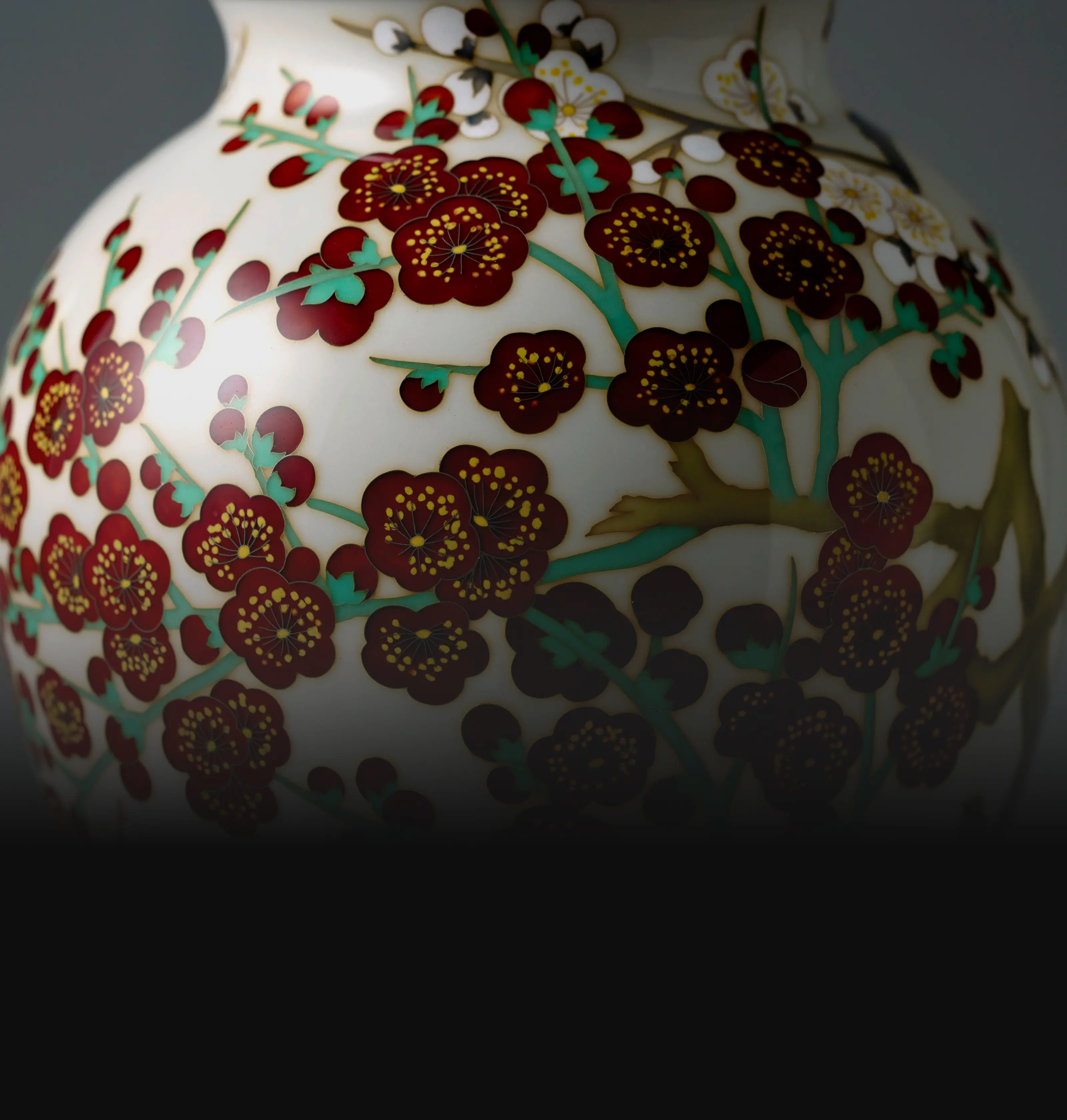Various Expression Techniques
Cloisonnes
Cloisonne is cherished for its wide range of expressive techniques. Similar to how oil paintings vary greatly based on the method used cloisonne can drastically change its character depending on the technique. From using silver wires to create clear outlines to blending colors and creating gradients or applying multiple layers of enamel for depth, cloisonne offers a range of expressions tailored to the desired artwork. The beauty created by layering enamels is unique to cloisonne.
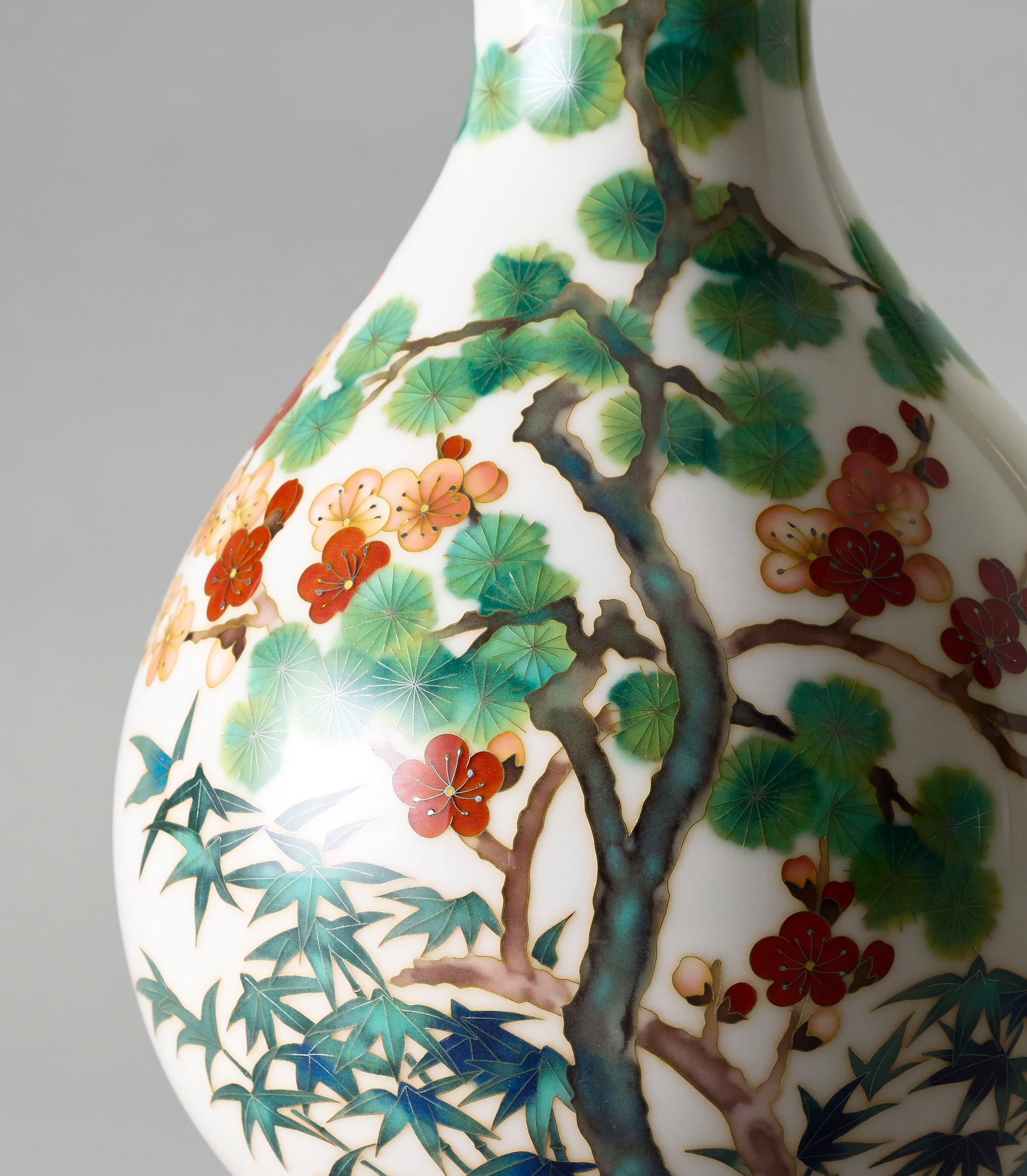
Cloisonne Techniques
Cloisonne, while only a single word, encompasses multiple techniques. Adapting these techniques allows for the expression of your desired design.

Wire Cloisonne
Color of Glass and Silver Wire Outlines
The basic technique of Owari Cloisonne, where metal wires outline the glass colors, creates a beautiful expression. The process involves drawing a design on copper or silver bases, creating contours with thin metal tape, filling these with enamel, and firing. Post-Meiji era, artisans developed various expression methods in this technique.
Expression in Cloisonne with Wires,Part1
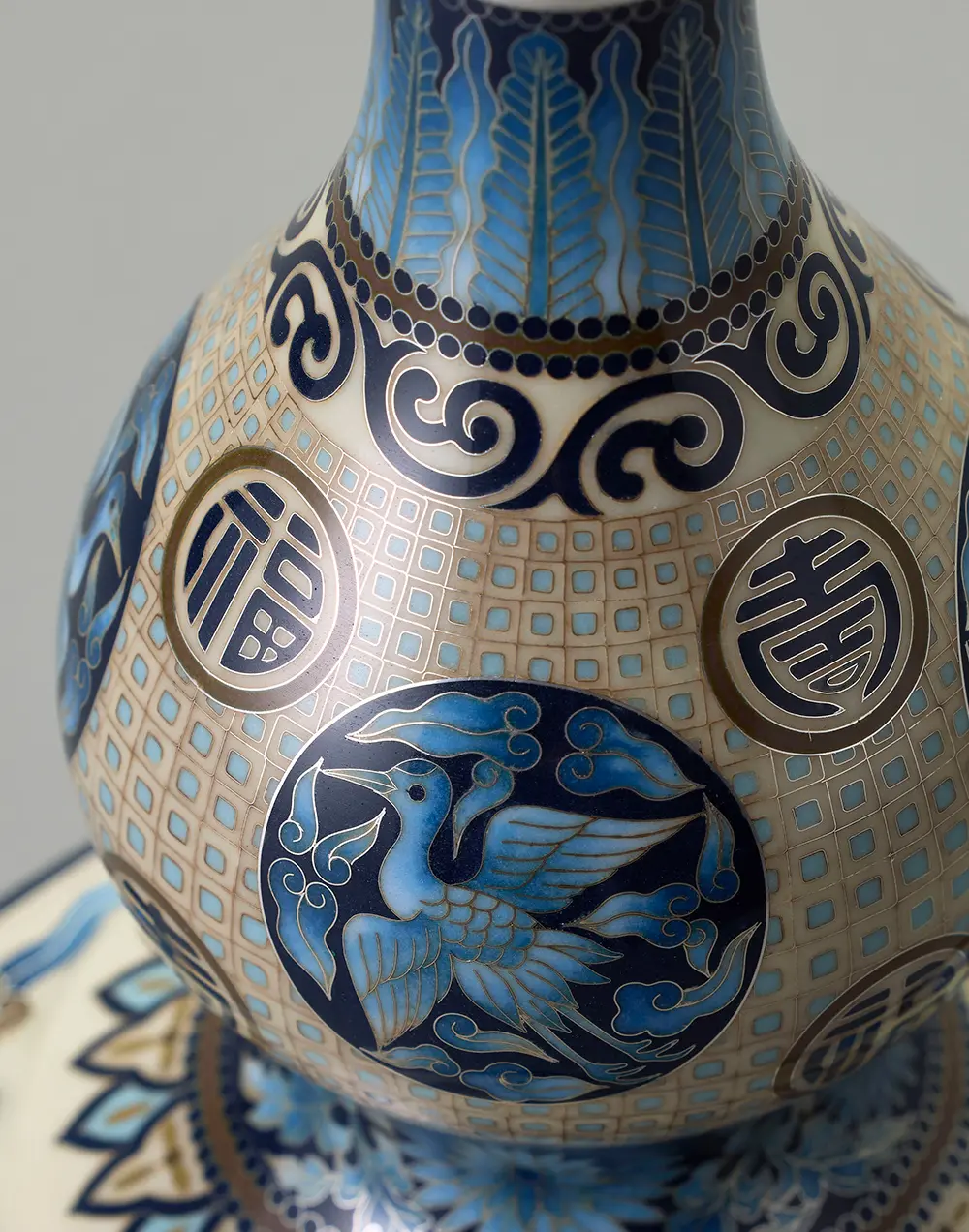
Precise Lines with Metal Wire
In wire cloisonne, metal wires are erected along every line that appears in the design, with the cross-section of these wires forming the visible lines on the surface. It means that for every line depicted in the artwork, an individual metal wire is placed with precision. Cloisonne are not only flat; they are often applied to curved surfaces like vases. Erecting metal wires perpendicularly on these curved surfaces requires exceptional craftsmanship and is a testament to the artisan's skill.
Expression in Cloisonne with Wires,Part2
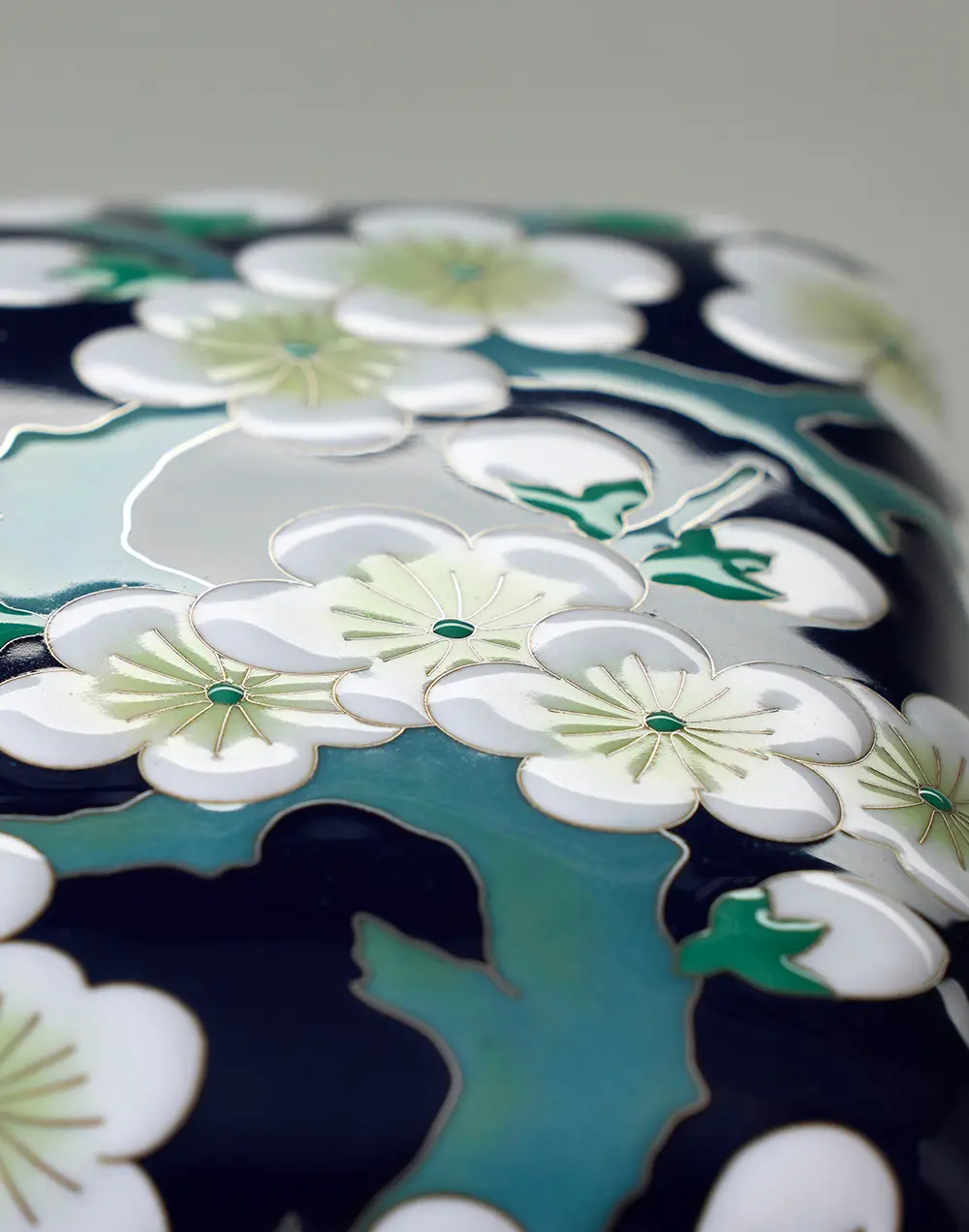
Raised Enamel for a Three-Dimensional Effect
In the process of wire cloisonne, there's a unique method known as raised cloisonne. This technique involves applying additional enamel to certain parts of the pattern, particularly where a raised effect is desired, then firing the enamel multiple times. Unlike the traditional focus of cloisonne of polishing the surface of glass, raised cloisonne stands out for creating a three-dimensional texture on the surface. This technique is quite impressive within the realm of cloisonne for its ability to produce a unique tactile quality and visual depth not typically found in other cloisonne methods.
Expression in Cloisonne with Wires,Part3

Depth through Layered Colors
Cloisonne uses multiple layers of enamel to create color depth. In works depicting objects like carp, adjustments in color and wire placement are made to give a three-dimensional illusion. This technique allows for a nuanced depiction of scenes, such as a carp emerging from the water's surface. To avoid a flat appearance the color of the carp's rear half is subtly changed, and the silver lines defining scales and contours in the front half are lowered into the enamel. This method creates a sense of depth, making it appear as though the carp is partly submerged. Semi-transparent glass enamel set in layers is the key to achieving this effect, demonstrating the versatility and depth achieved with cloisonne techniques.
Expression in Cloisonne with Wires,Part4
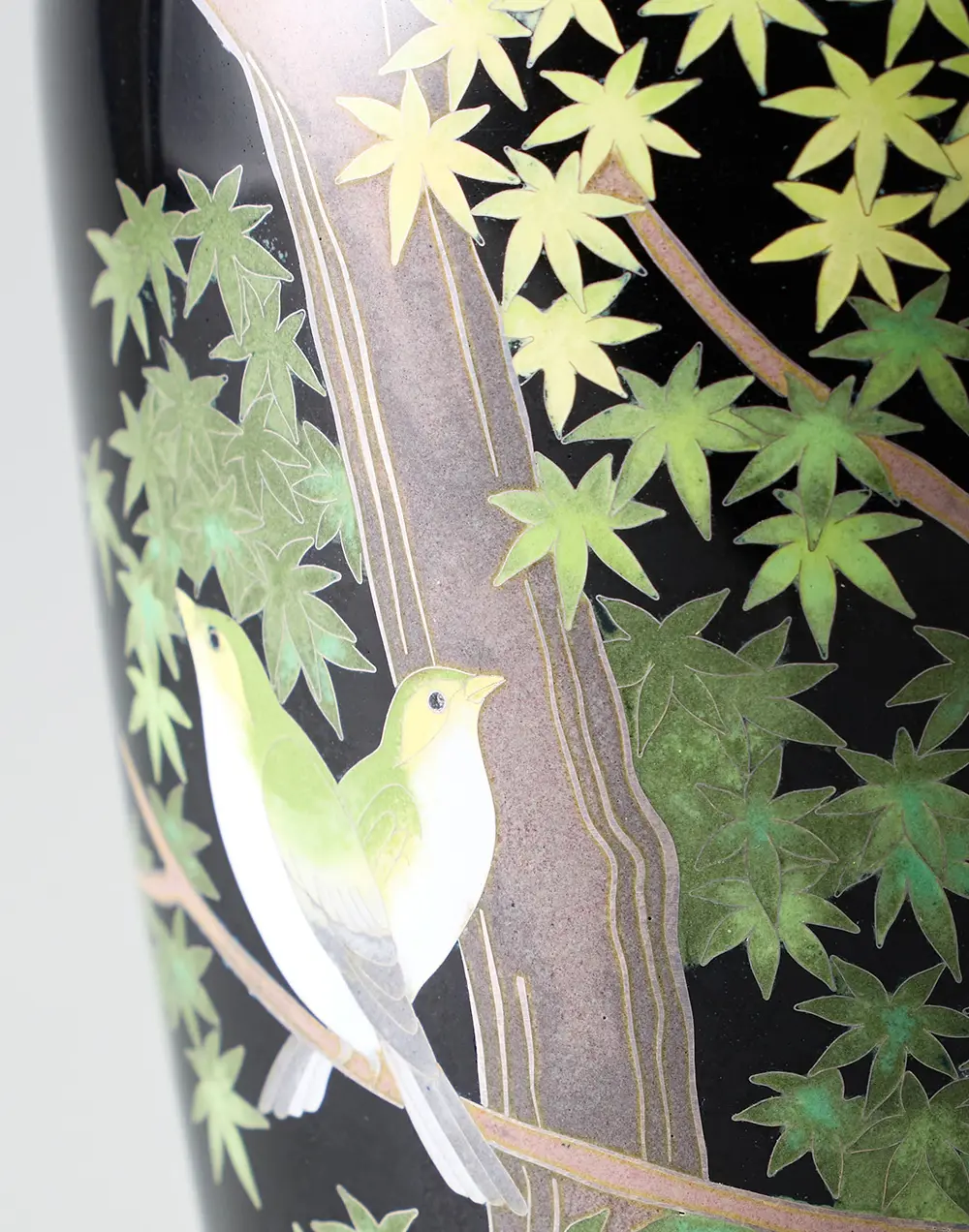
Expressing Strength by Hammering Metal Wires
In cloisonne art, the wired cloisonne technique consists of fine silver wires used to form delicate designs. By varying the wire's thickness, a sense of strength and an emphasis on individual motifs is achieved. To accomplish this, we use the Uchibari technique of hammering the silver wire to create variations in thickness. While standard silver wire lines are uniformly thin, the hammering technique allows for expressions with varying strengths, similar to brush strokes, creating a distinct impression compared with other motifs. For further emphasis, silver paste is added between the wires, or silver lumps are placed.
Expression in Cloisonne with Wires,Part5
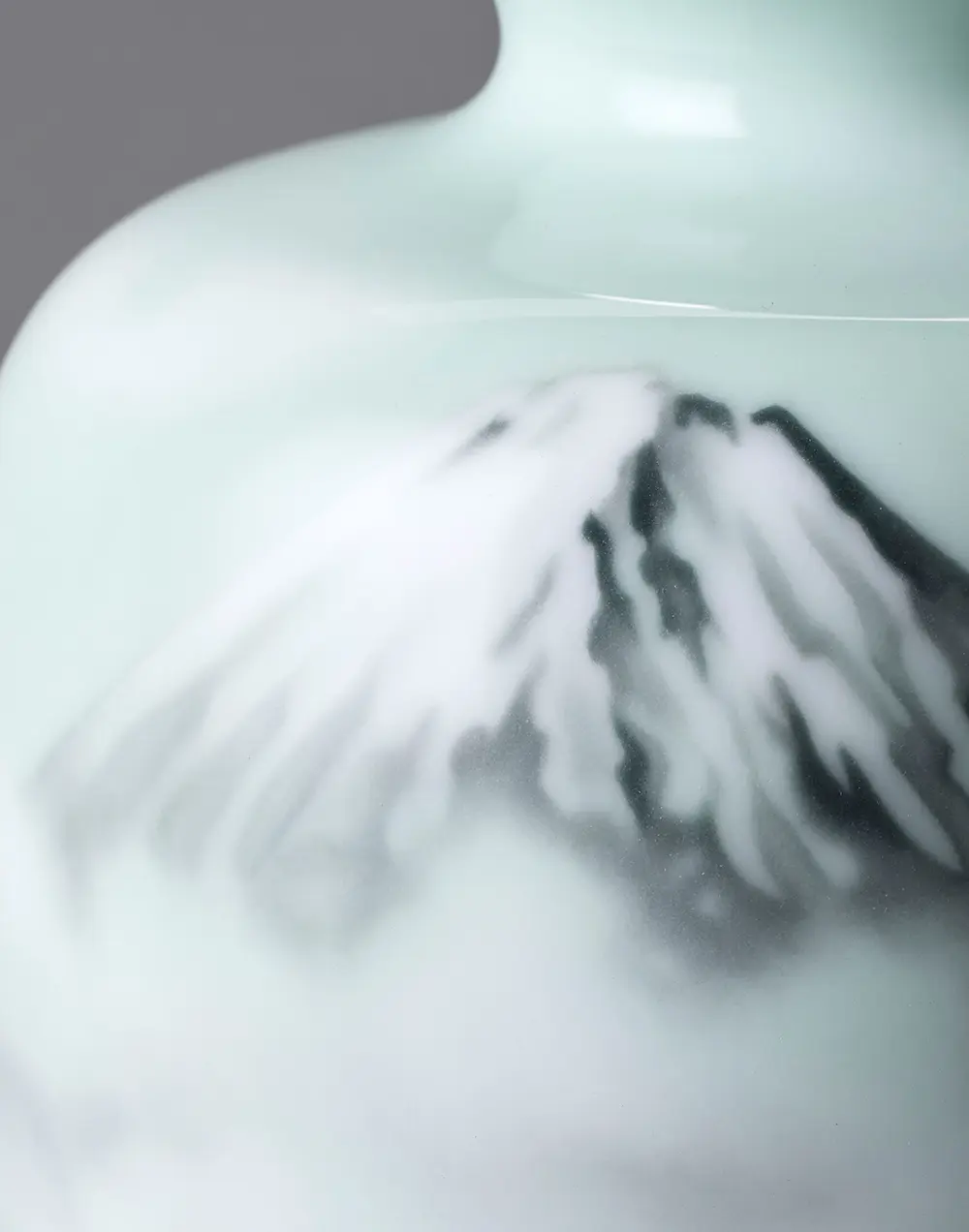
Removing Metal Wires for a Softer Expression
Wireless cloisonne is a technique where we remove the silver wires from the surface. Like wired cloisonne, we draw designs and apply enamel, but remove the metal wires before firing. There is also a method that involves no metal wires. This technique is for motifs like mountain ridges, where the desire is for blurred or less distinct outlines.
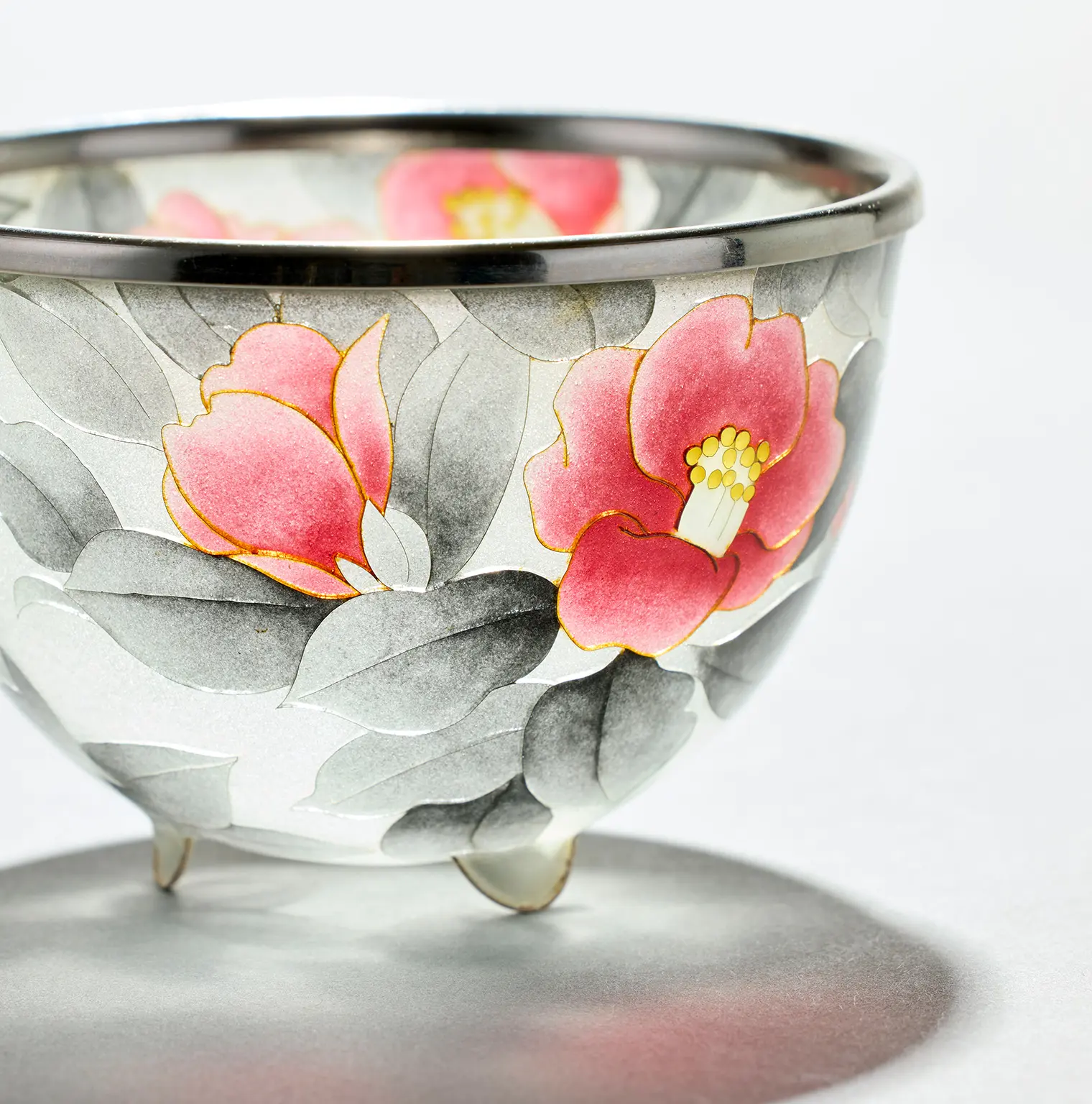
Shoutai Shippo (Plique-à-jour)
Creating a Glass-Like Appearance by Removing the Base Material
This technique involves creating wired cloisonne with transparent enamel and using chemicals to dissolve and remove the copper base, leaving only the silver wires and enamel parts. This method aims to create an effect similar to looking through stained glass, resulting in a unique beauty reminiscent of stained glass.
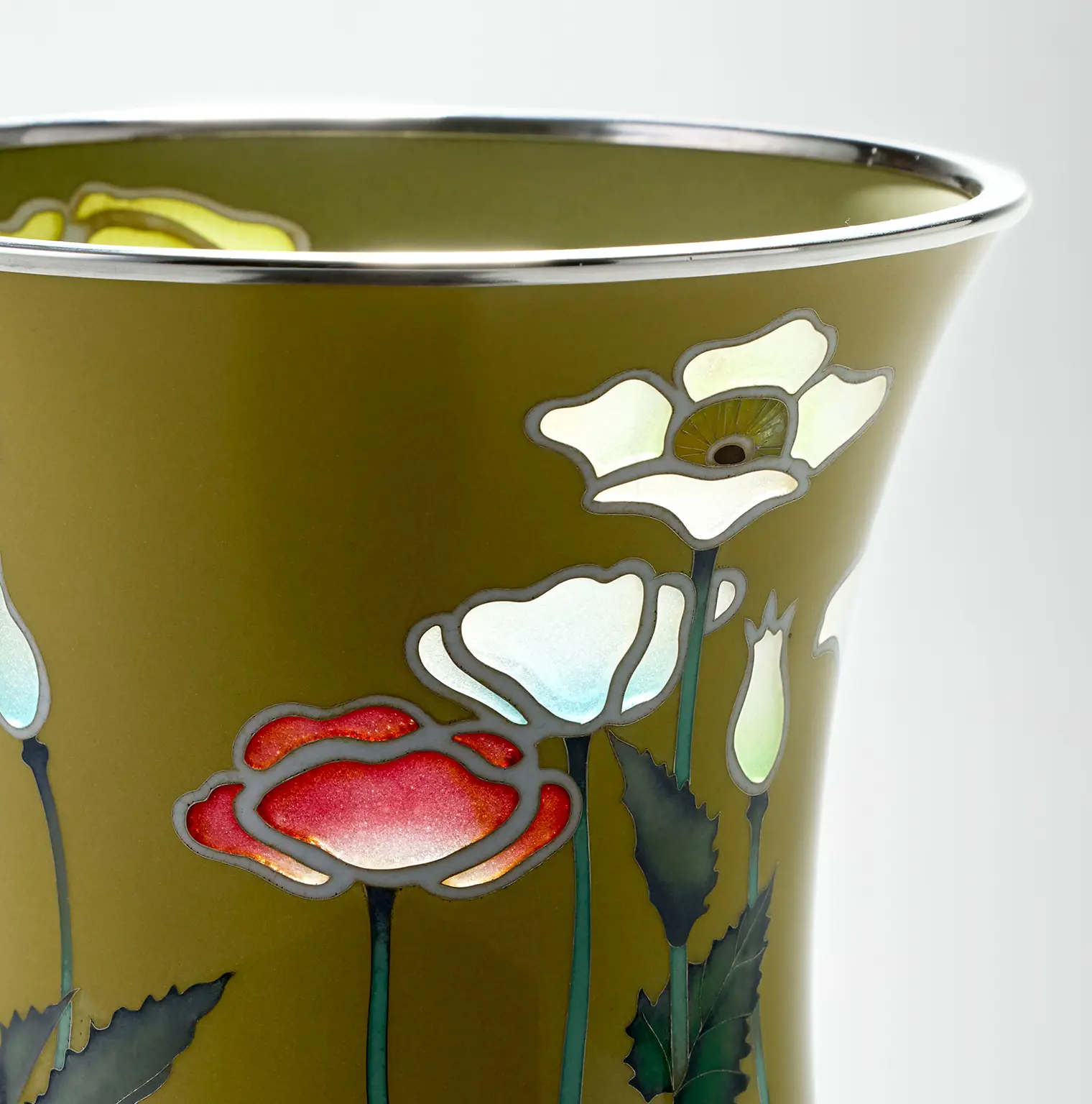
Toutai Shippo (Plique-à-jour)
Expressing Openwork by Cutting Away Parts of the Base
Also known as kiri sukashi shippo, this technique involves cutting away parts of the base material according to the design. Wide silver wires are then inlaid along the contours of the cut-out sections and fired onto the copper base. The hollow areas are filled with transparent enamel, and the remaining copper base is treated with standard wired cloisonne, creating a technique rich in variation and effect.
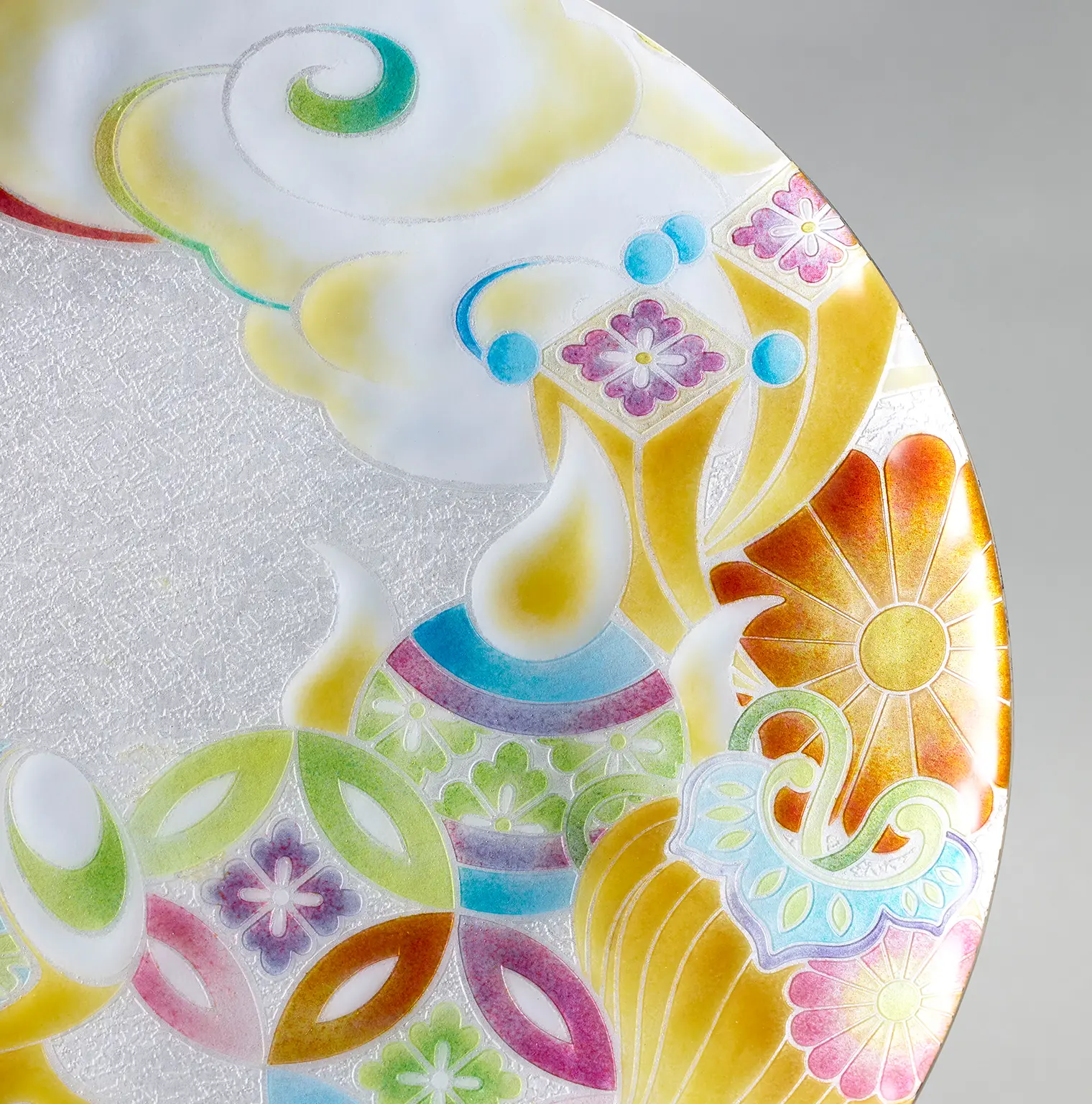
Silver Decor Cloisonne
Exploiting the Sheen of Silver
This technique involves affixing silver foil on a copper base and then applying transparent or semi-transparent enamel before firing, known as silver-plated cloisonne. Another method, electroformed cloisonne, involves applying silver plating over a patterned copper base created by electroforming and then applying enamel. Both are referred to as silver decor cloisonne. The transparency of the enamel allows the underlying color to show through, combining the unique sparkle of silver with the hues of the enamel for a distinctive beauty.
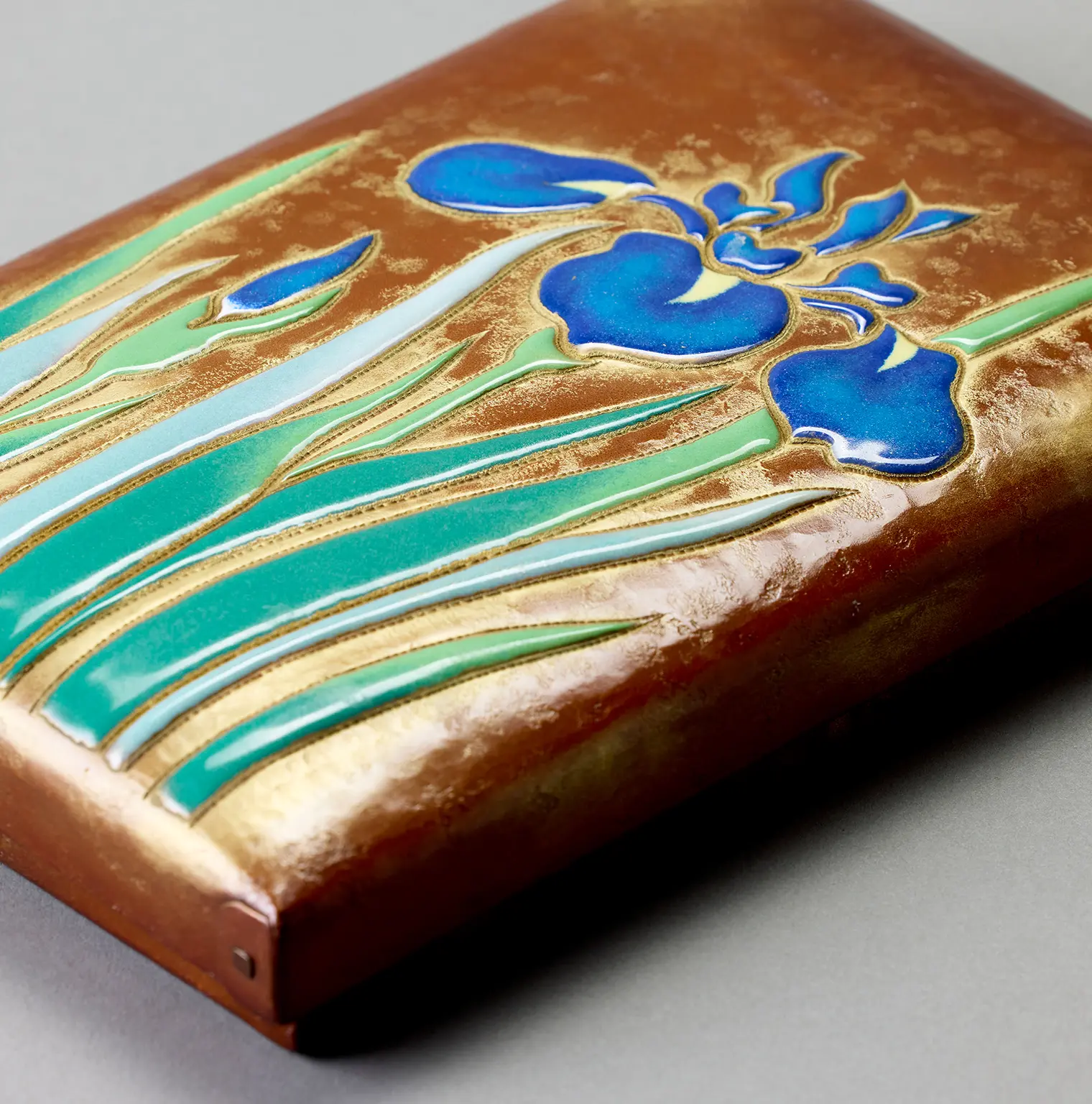
Colored Enamel Cloisonne
Coloring Embossed Metal Patterns with Enamel
In this technique, the surface of the metal base is embossed with a pattern using tools like hammers, creating contours to hold the enamel and then applying cloisonne only to these patterned areas. This method, known as colored enamel cloisonne, creates a unique texture by contrasting the treated metal surface and the enameled areas.
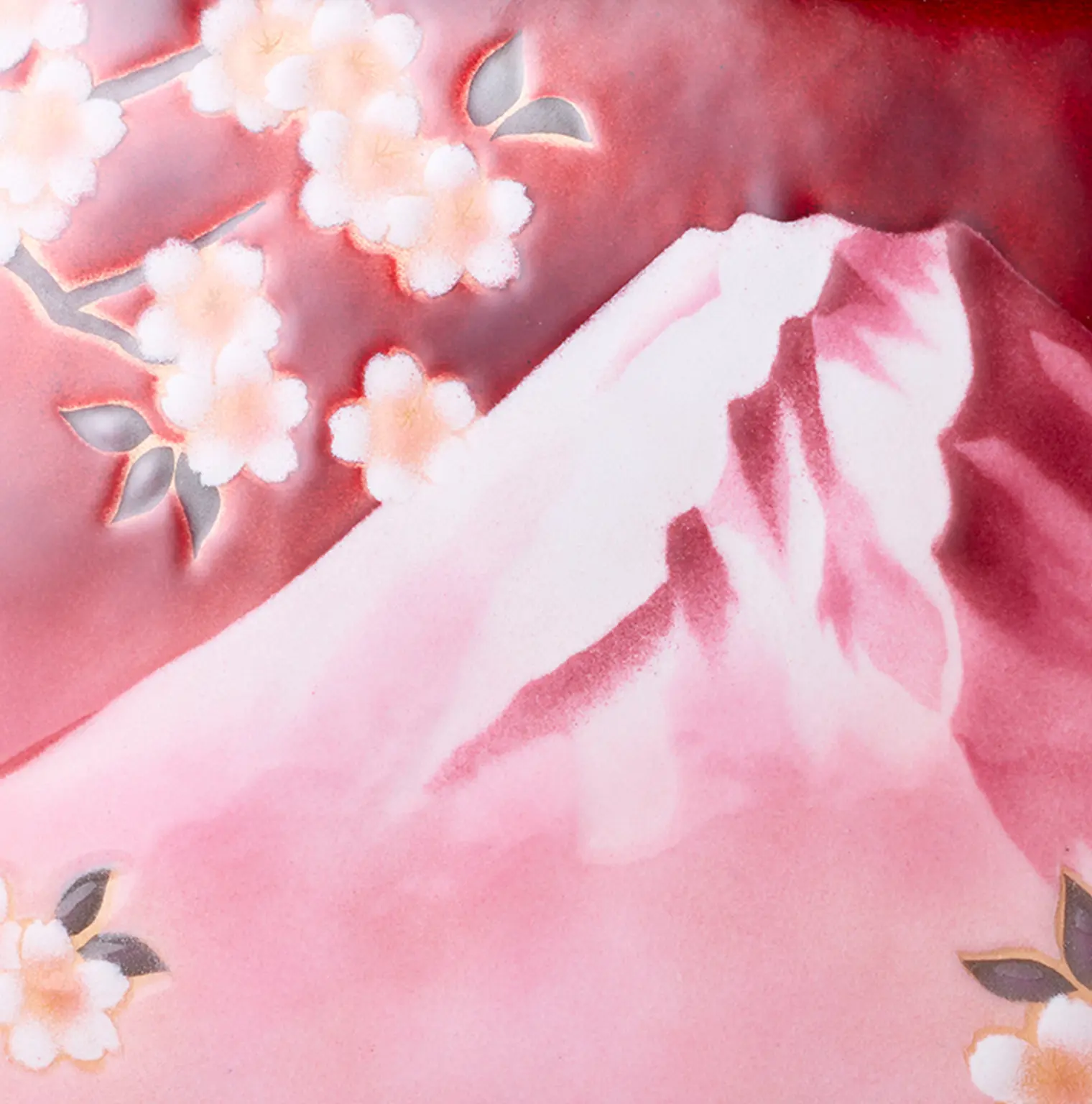
Enamel Cloisonne
Painting with Enamel like a Picture
Inspired by a European enamel technique, this involves covering a copper base with white or transparent enamel, then either outlining or leaving it as is, and painting with water-diluted glass enamel as one would in a painting.
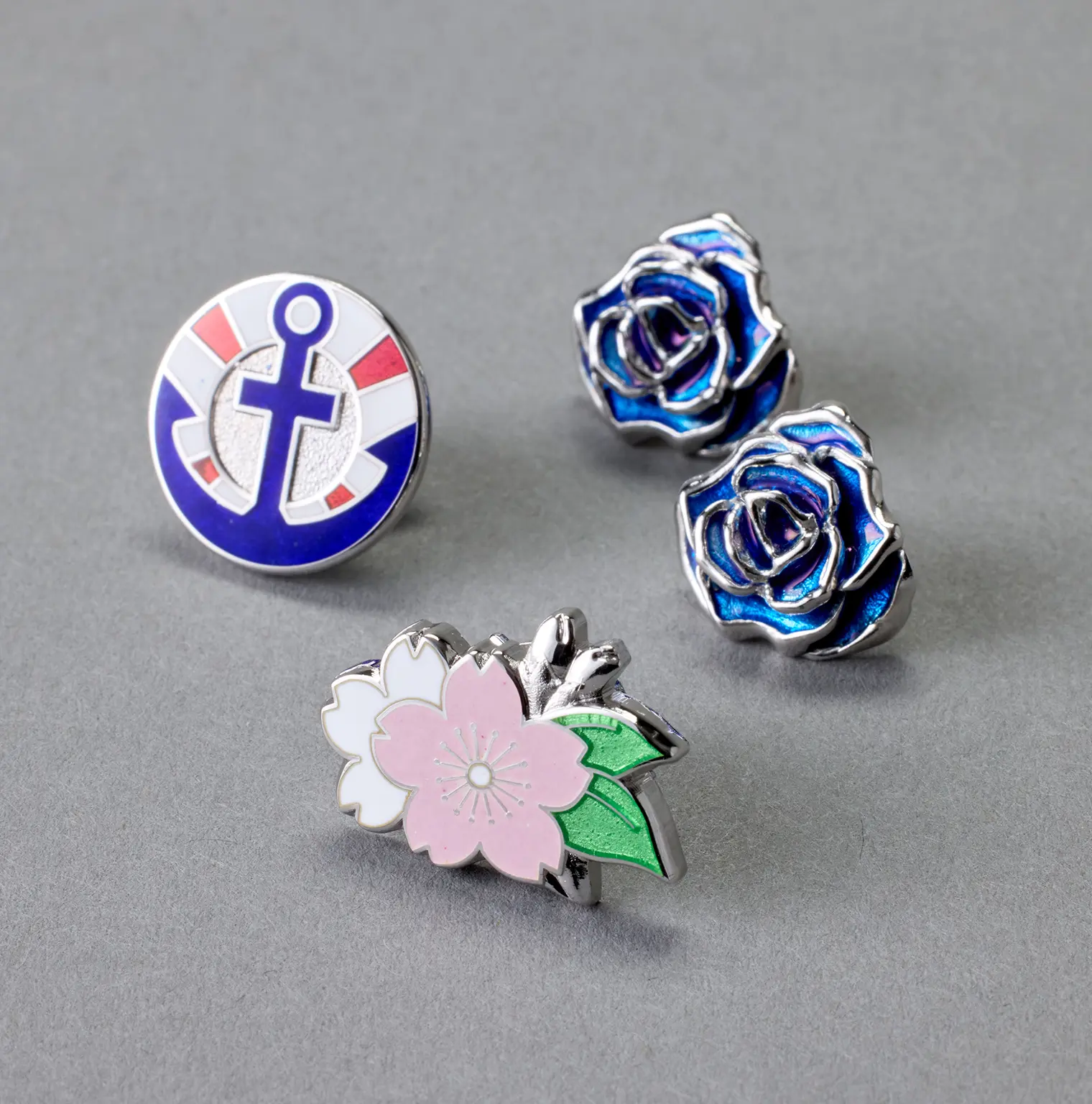
Metal Cloisonne
A Versatile Cloisonne Expression for Badges, Jewelry, and More
This cloisonne uses metal enamels that melt at relatively low temperatures. Applied to pressed base materials or silver bases with metalwork, and then fired, this technique is comparatively easy to handle and is often used in cloisonne workshops.
